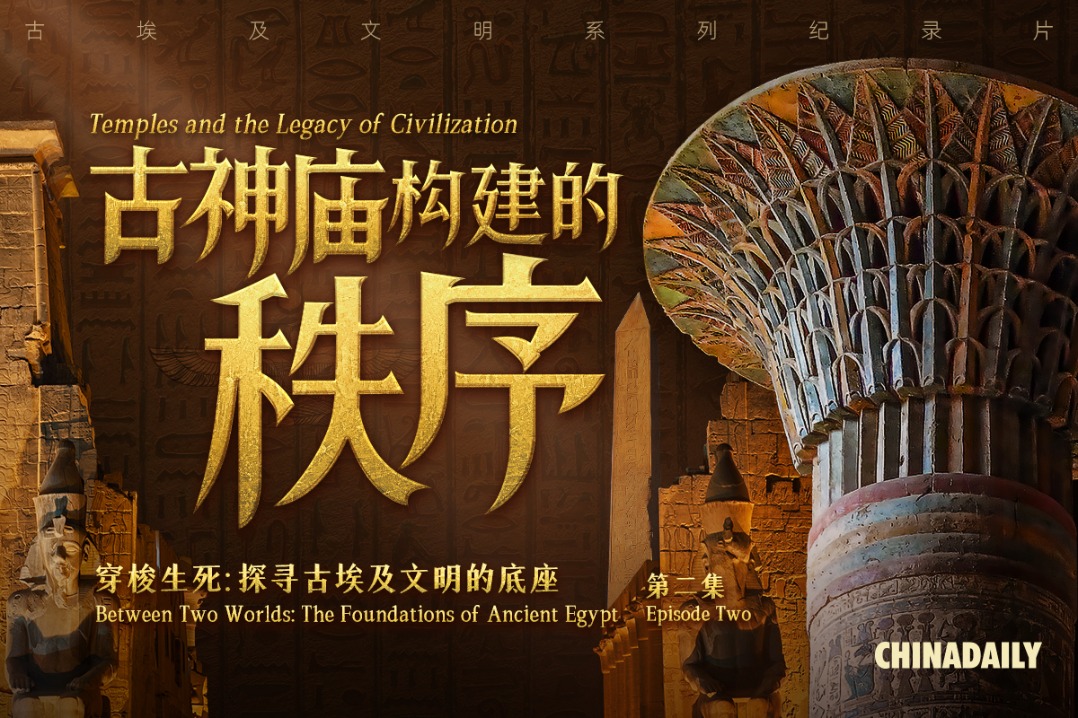AI provides potential problem-solving synergy


As the 50th anniversary of China-EU diplomatic relations approaches, both sides should foster strategic trust in critical areas such as AI ethics
Since 2018, the European Union has forged an artificial intelligence strategy centered on norm setting, standard guiding and technological sovereignty. However, faced with the reality of "excessive regulation yet insufficient competitiveness", the EU is actively pursuing strategic adjustments.
Chinese companies such as DeepSeek now offer cost-efficient, high-performance solutions that present viable cooperation opportunities for the EU. Specifically, prospects for China-EU AI collaboration can be explored through three dimensions: R&D complementarity, sustainable development and global governance.
The EU and China possess distinct yet complementary comparative advantages in R&D. The EU maintains strong capacities in fundamental research and core algorithmic development, though its scientific prowess has not been transformed to large-scale commercialization or industrial competitiveness. In contrast, Chinese tech companies excel in deploying and iterating models rapidly, fostering enterprises such as DeepSeek with strong industry-specific adaptability, heightened contextual awareness, and robust system-level integration capacities. This synergy between theory-driven and application-driven innovations lays the groundwork for a shared technology ecosystem.
China and the EU share key interests in sustainable growth. From the EU-proposed Green New Deal to China's innovation-driven development strategy, both require foundational support from AI technology. Robust markets and research institutions in the healthcare sector exist on both sides, presenting significant potential for collaboration. Confronted with intensifying aging challenges, China and Europe share the goal of leveraging AI to enhance elder care services, clinical care systems and social security efficiency. This convergence highlights significant shared interests in advancing sustainable growth, which establishes a solid foundation for collaboratively developing more robust global frameworks.
On global AI governance, China and the EU exhibit converging positions in upholding multilateralism and opposing unilateral governance. Both are committed to establishing open, inclusive international governance frameworks. Through platforms such as the United Nations and the G20, they seek to develop balanced and inclusive rule systems that accommodate diverse interests. This shared commitment to multilateral approaches creates momentum for bilateral cooperation.
Despite this, the EU maintains multiple practical concerns regarding the technical solutions offered by Chinese AI startups. Foremost among these is compliance with data privacy regulations. Any AI products entering the European market must comply with regulations such as the General Data Protection Regulation. The EU questions whether models such as DeepSeek will adhere to its privacy standards. Key concerns include demonstrating transparency in training data collection and user data processing, securing user consent, and ensuring European data is not transferred abroad without explicit authorization.
In its AI policy toward China, the EU frequently grapples with a structural contradiction between its pursuit of strategic autonomy and its reliance on transatlantic security. This tension has prompted increasingly stringent security reviews of Chinese tech companies in recent years. Consequently, Europe has heightened its vigilance toward Chinese AI products such as DeepSeek, scrutinizing them not only from a commercial standpoint but also, and more critically, from a national security perspective.
Then, ethical and value considerations come into play. European policymakers are concerned that large models developed in China may embed preferences not aligned with EU ethical norms, potentially impacting its established standards. This dual reality — where opportunities for cooperation coexist with necessary safeguards — reflects the complex interplay of technical complementarity and institutional heterogeneity in China-EU AI collaboration.
Given the substantial shared interests and structural complementarities in AI governance between China and the EU, the two sides possess both the practical foundation and strategic imperative to forge a deeper collaborative partnership. Advancing the China-EU cooperation framework requires a coordinated approach across multiple dimensions, including institutional dialogue, standards alignment, multilateral governance and enterprise collaboration.
First, establishing a high-level China-EU dialogue mechanism on AI governance. The two sides should build an institutional platform for exchanges on digital policy and AI governance, and set up a joint task force on AI governance. Regular high-level meetings, coupled with structured engagement between legislators, regulators, industry representatives and research institutions, will help address policy, technological and industrial aspects.
Second, advancing the alignment and parallel development of AI governance standards. With the EU AI Act now in force and China accelerating regulatory frameworks for algorithmic safety, cross-border data flows and security reviews, both sides should take this opportunity to coordinate technical standards and governance rules. On the one hand, they can facilitate cooperation between standard-setting bodies and research institutions to align approaches on AI ethical guidelines, risk classification frameworks, and testing and evaluation methodologies, reducing compliance friction for businesses operating across both markets. On the other hand, they can jointly contribute global public goods through international standards organizations and multilateral forums, providing adaptable technical reference frameworks for emerging economies.
Third, enhancing multilateral cooperation and position coordination. As pivotal actors in global governance, China and the EU share the responsibility to advance inclusive global AI governance frameworks. Both should leverage platforms such as the UN and G20 to foster open, cooperative governance models. Amid growing geopolitical fragmentation in technology governance, the US is establishing a small, exclusive grouping that promotes the same regulatory standards, turning AI into a tool for unilateral global governance. As key stakeholders committed to rules-based international order, China and the EU must jointly counter the trend toward fragmented, bloc-based technology governance and champion inclusive multilateralism to resolve the structural imbalance of "hegemonic rule-setting vs forced compliance".
Last but not least, a collaborative risk-response mechanism for China-EU AI enterprises should be established. Beyond intergovernmental cooperation, fostering trust-building and collaboration mechanisms between enterprises is equally vital. China and the EU should encourage leading AI companies to establish joint R&D platforms, enhance cross-context and cross-cultural model adaptability, and facilitate exchanges among AI companies, platform operators and standard-setting bodies.
Moreover, to build consensus on technological risks, both parties should establish a jointly supported AI risk-assessment center. This center would focus on algorithmic ethical assessments, security vulnerability testing, and misuse early-warning systems for large-scale models and generative AI, thereby strengthening common understanding of foundational AI risks between China and the EU.
In summary, the EU's AI strategy reflects its fundamental dilemma between shaping global rules and safeguarding technological sovereignty. As the 50th anniversary of China-EU diplomatic relations approaches, both sides should embrace the principle of win-win cooperation and foster strategic trust in critical areas including AI ethics, safety certification and cross-border collaboration. Only through steadfast multilateralism can we advance a global AI governance framework characterized by technological inclusiveness, coordinated rules and shared responsibility — thereby balancing innovation with societal risks and advancing sustainable development in the AI era.
The author is a professor at the School of Political Science and International Relations at Tongji University and executive deputy director of the Institute for cyberspace governance. The author contributed this article to China Watch, a think tank powered by China Daily.
Contact the editor at editor@chinawatch.cn.


































